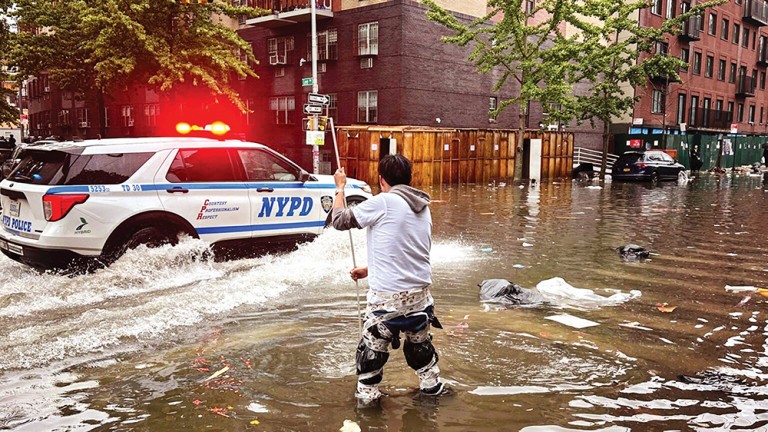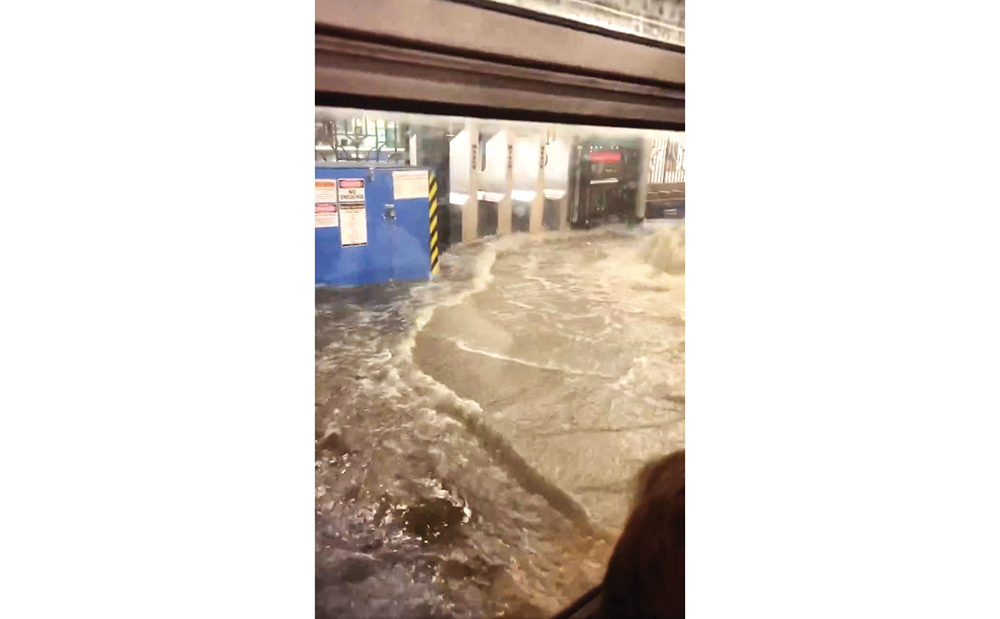By Michael V. Cusenza
On Monday night, an epic, high-impact thunderstorm unleashed torrential rain, flash flooding, and high winds on the five boroughs.
“I probably don’t recall seeing that level of rain before,” Mayor Eric Adams said on Tuesday. “We saw the heaviest rainfall in Central Park and Harlem with 2.64 inches. In fact, Central Park had the second highest one-hour rainfall total ever documented at that location, only being surpassed by what we saw four years ago during Hurricane Ida.”
Some of the highest rainfall totals in Queens included:
LaGuardia Airport: 1.66 inches
Bellerose: 1.52 inches
Ozone Park: 1.38 inches
Long Island City: 1.23 inches
John F. Kennedy International Airport: 1.02 inches
The storm caused widespread travel disruption across subways, highways, and regional railing. Several subway lines were temporarily suspended or delayed due to flooding and signal issues. A portion of the FDR Drive, Cross Bronx Expressway, and Harlem River Drive experienced closures, JFK and LaGuardia airports significant delays and more than 1,500 Con Edison customers lost power across all five boroughs.
“Last night’s storm was a continuation of the pattern that we’ve seen over the last several years of the increasing frequency of these tropical-style intense but short bursts of rain that we have been getting,” said City Department of Environmental Protection Commissioner Rohit Aggarwala.
“With last night, it is now the case that five of the most intense rainstorms in New York City’s history have taken place in the last four years. And in addition to what the mayor cited as the 2.7 per hour number that was recorded at Central Park, the absolute peak of yesterday’s storm during 15 minutes recorded a rate of 4.08 inches per hour, according to New York State’s mesonet monitoring system. That compares with a peak rate of 6.06 in Ida, which is the highest we’ve ever recorded. And so last night was one of the most intense rainstorms the system has dealt with.
“Many of you recognize, and we’ve been talking about for several years, the fact that the city’s sewers were designed over the last 100 or 200 years to deal with an intense rainstorm of up to 1.75 inches per hour. So what happened last night is really quite simple. The pipes were designed for a certain amount of water. A lot more water fell from the sky and was trying to get into them.
“The problem, as we know, is that this is a level of rain that we never expected over the 400 years we’ve been here and over the 150 years we’ve been building these sewer systems. So we’ve done a lot over the last three years, but as we have talked about at great length, addressing stormwater resilience to fix this underground infrastructure is going to be the work of tens of years, decades,” Aggarwala said.
The DEP commissioner also noted that several subway stations were deluged with staggering amounts of water—photos and video clips recalling the wrath wrought by Superstorm Sandy on the city’s antiquated subway system.
“The reality is that the subways are underground. They are where water will flow, and so we do work very closely with the MTA to protect that underground infrastructure, but it is a long-term effort,” Aggarwala added.


